On November 2, 1889, South Dakota became the 40th state in the Union. Its admission marked the culmination of decades of westward expansion, frontier settlement, and shifting territorial boundaries that shaped the northern Great Plains into a permanent part of the United States.
Long before European settlers arrived, the Arikara, Cheyenne, and Sioux peoples lived across what is now South Dakota. The Arikara were farmers who lived along the Missouri River, while the Cheyenne hunted near the Cheyenne and White Rivers and in the Black Hills. In the early 1700s, the Sioux migrated west from Minnesota, becoming skilled horsemen and hunters who followed the vast buffalo herds that roamed the Great Plains.
In 1682, French explorer René-Robert Cavelier, Sieur de La Salle, claimed all land drained by the Mississippi River—including South Dakota—for France. The first Europeans to set foot in the region were French-Canadian brothers François and Louis-Joseph La Vérendrye, who in 1743 buried a lead plate near today’s Fort Pierre to mark France’s claim. A group of schoolchildren discovered that plate in 1913; it now rests in the South Dakota State Historical Museum. The first European settler, Pierre Dorion, arrived in 1785 to trade furs in the James River Valley.
The region became part of the United States in 1803 through the Louisiana Purchase. A year later, Lewis and Clark passed through South Dakota on their expedition to explore the new territory. They camped near Elk Point and followed the Missouri River, later reporting abundant wildlife and friendly relations with Native tribes.
In 1817, Joseph La Framboise built the area’s first permanent settlement near Fort Pierre. Tensions grew as fur trading and settlement expanded, leading to conflicts between tribes and incoming settlers. For decades, most white settlers stayed close to the Missouri River, but by the 1850s, new towns like Sioux Falls, Flandreau, and Medary were founded as eastern lands opened for settlement under treaties with the Yankton Sioux.
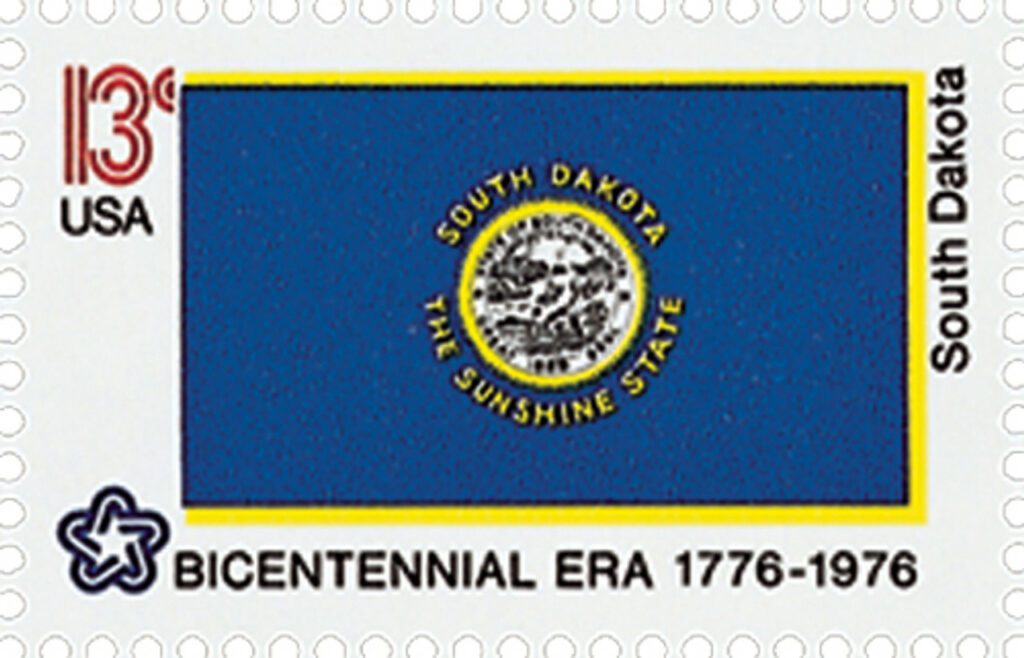
South Dakota’s governance changed several times before statehood. Between 1812 and 1861, parts of the area belonged to the Missouri, Michigan, Wisconsin, Iowa, Minnesota, and Nebraska territories. Finally, in 1861, Congress created the Dakota Territory, which included present-day North and South Dakota, as well as parts of Montana and Wyoming.

Conflict between Native tribes and settlers erupted in the 1860s. Red Cloud’s War (1866–1868) saw the Sioux resist US efforts to build forts along their hunting lands. The resulting treaty created the Great Sioux Reservation, which covered all land west of the Missouri River. However, the discovery of gold in the Black Hills in 1874, led by Lt. Col. George A. Custer, brought waves of miners who violated treaty boundaries. Towns like Deadwood and Lead sprang up almost overnight, filled with prospectors and outlaws like Wild Bill Hickok and Calamity Jane. The Sioux were eventually confined to smaller reservations after the Wounded Knee Massacre in 1890, in which more than 350 Native men, women, and children were killed.
Meanwhile, the promise of gold and fertile farmland drew thousands of settlers. Between 1870 and 1890, the population exploded from fewer than 12,000 to more than 348,000. Railroads and cattle ranches followed, transforming the plains into productive farmland. As the territory grew, residents in the north and south pushed for separate governments. In February 1889, Congress divided the Dakota Territory in two, and on November 2, 1889, President Benjamin Harrison signed the proclamations admitting both North and South Dakota as states.
South Dakota’s early years were difficult. Droughts slowed progress, but by 1910 the population exceeded 580,000. Like much of the Great Plains, the state suffered during the Dust Bowl of the 1930s, when fierce “black blizzards” of dust stripped away valuable topsoil. World War II brought renewed prosperity, as farmers and ranchers helped feed the world.
Since then, South Dakota has diversified its economy. Once dependent solely on agriculture, it now thrives on manufacturing, financial services, and tourism, drawing millions of visitors to the Black Hills, Mount Rushmore, and Badlands National Park each year. The state’s clean air, wide-open landscapes, and lack of income tax make it attractive to residents and businesses alike.
| FREE printable This Day in History album pages Download a PDF of today’s article. Get a binder or other supplies to create your This Day in History album. |
Discover what else happened on This Day in History.

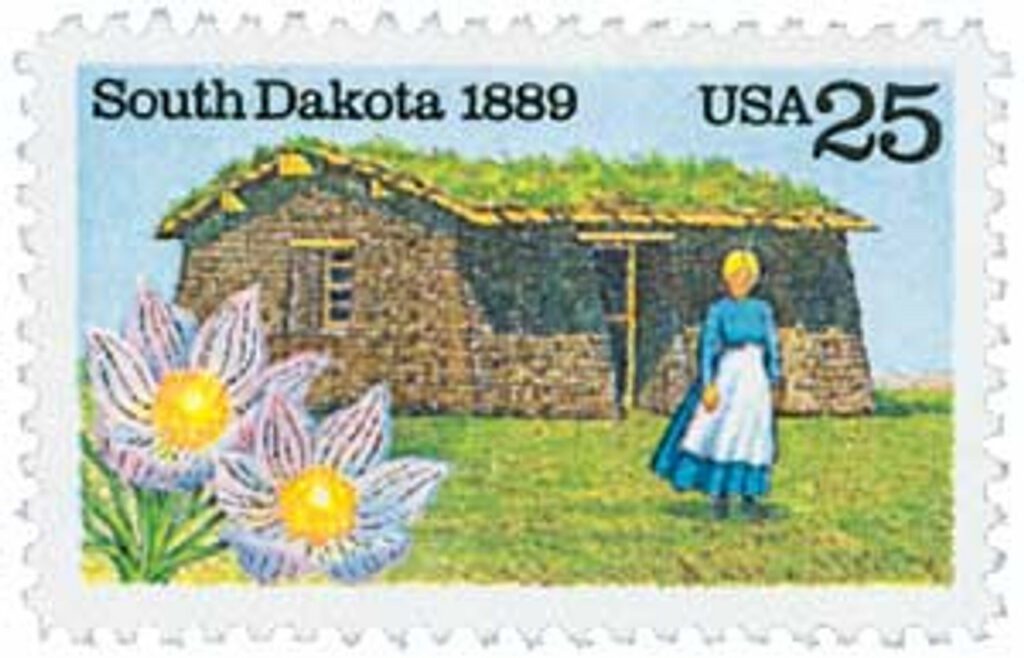

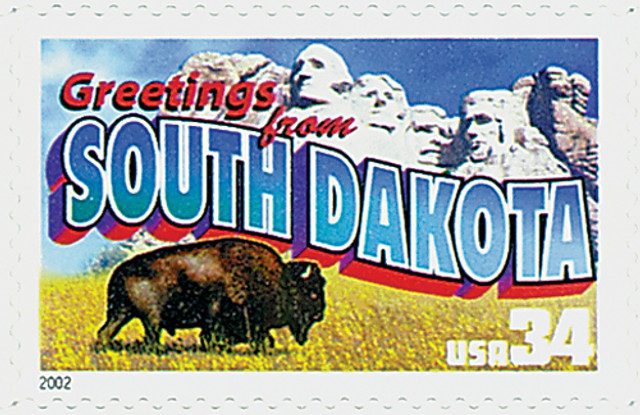
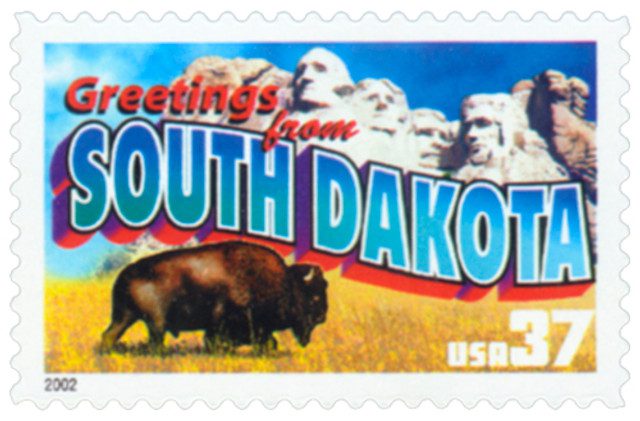
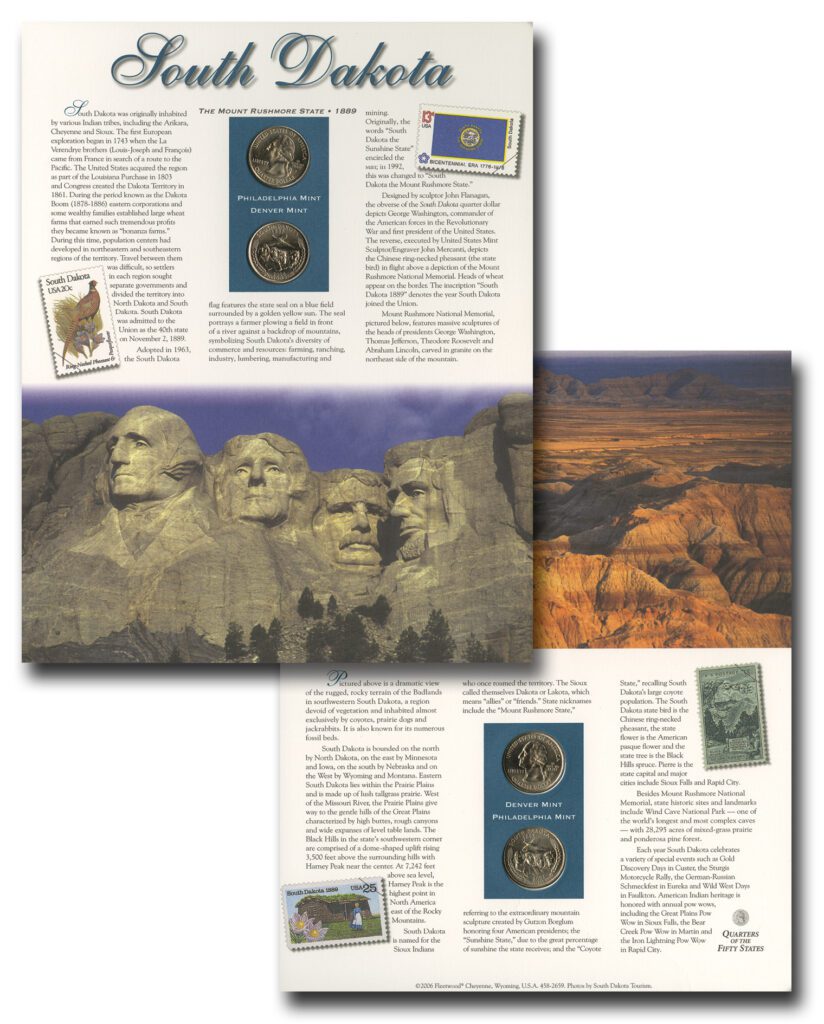

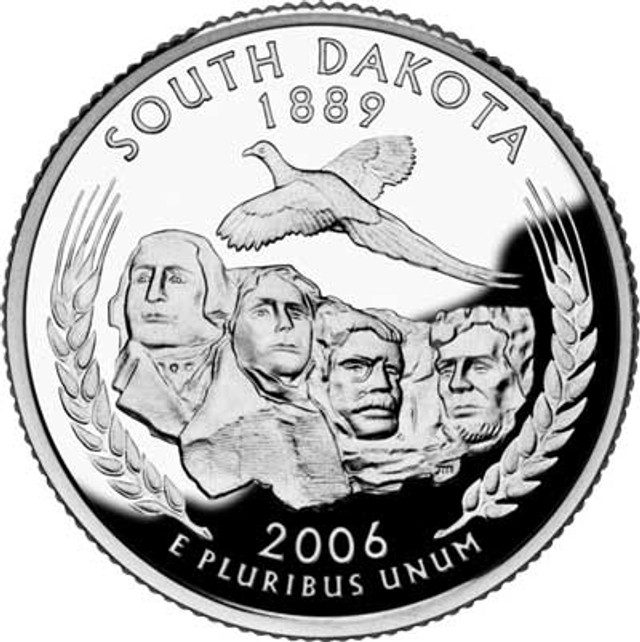
Good article. My German ancestors came to the Dakotas from the Russian Steppes area where they had been invited by Katherine the Great to increase agriculture in the Black Sea region. As tensions increased there in the later 1800’s, those Germans began looking to move elsewhere. One early group came to the Dakota area and realized the vast plains were nearly identical to the Steppes area. Word went back and a majority of those Germans from Russia came and settled on the plains of the Dakotas and into southern Canada to farm. Even into the late 20th century, many of the towns they set up were still German speaking.
They were called the Volga-Deutsch and they also settles parts of Eastern Colorado.
They were mentioned in James Michener’s Centennial in the person of Hans Brumbaugh.
I think that there is one error in this account. My understanding of Red Cloud’s war was that it was caused by the Army’s intent to establish a road along the Bozeman Trail with a string of forts along it. The most famous episode during it occurred in 1866. Known as the Fetterman Massacre, it happened near Fort Phil Kearney when a force of US Cavalry of 80 men was lured beyond the safety of the fort and wiped out. That was at least a decade before gold was discovered in the area.
I don’t know if this is true – I think I saw it in Ripley’s “Believe it or Not”. But the story is that before President Benjamin Harrison signed the statehood bill for these two territories, closed his eyes before shuffling the bills around & then signed them without looking, so neither one of the dakotas could brag about being first.
That is a great story!
Very interesting information about these two states in American history!
Good information I was not really clear on their admission process